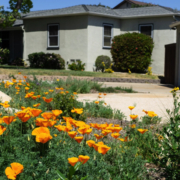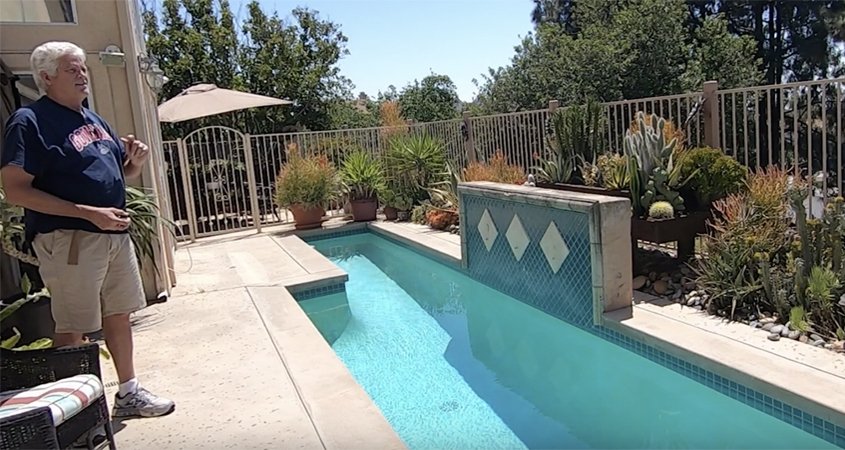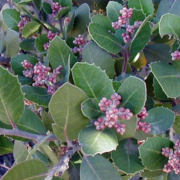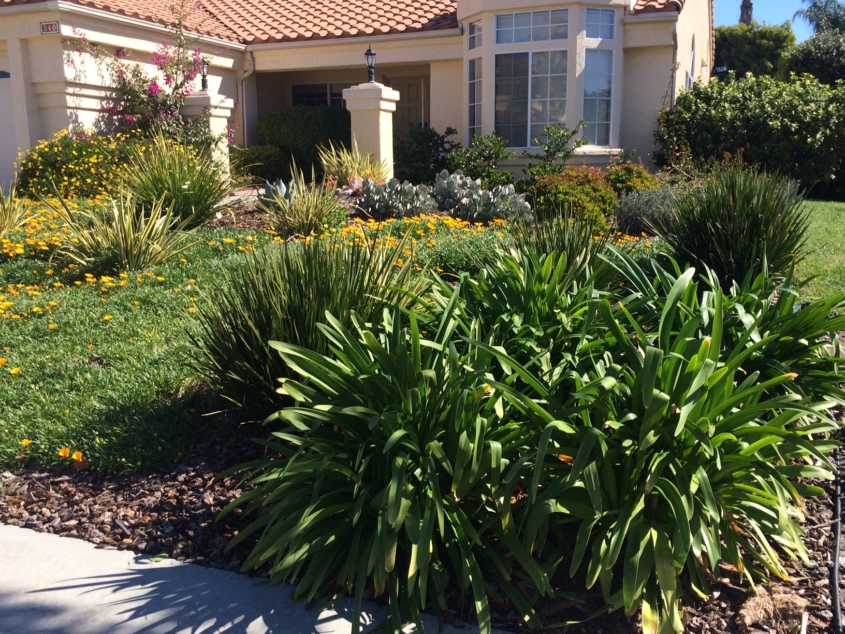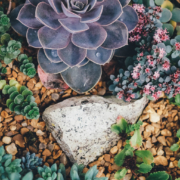Landscape Transformation Wins Sweetwater Authority Contest
National City homeowner Catalina Schultz decided to reinvent her yard. Her landscape transformation from grass to a low-water use design is the 2023 winner of the Sweetwater Authority WaterSmart Landscape Makeover Contest.
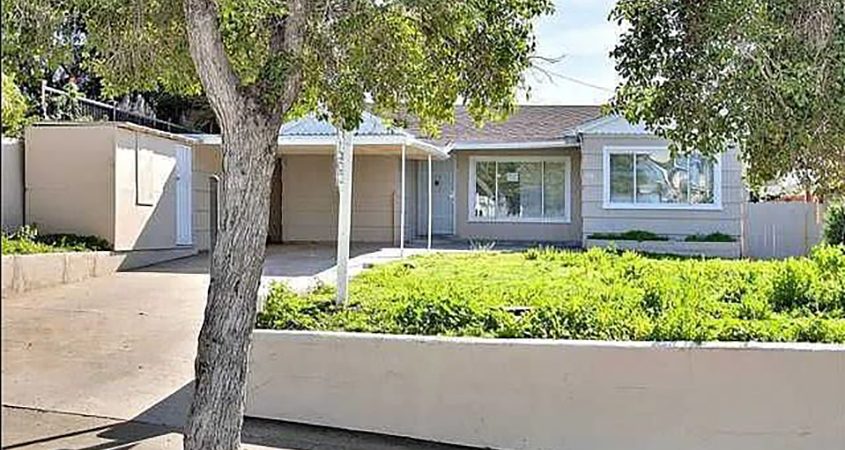
The front yard before the landscape transformation. Photo: Sweetwater Authority
Schultz’s landscape demonstrates how homeowners can create a beautiful, California-friendly landscape using less water. Schultz was recognized for her accomplishment at the Authority’s June board meeting.
When Schultz purchased her house in 2011, the front yard was covered in turf and required lots of effort and water to maintain. She decided to reinvent her yard, planning out a space full of low-water use plants, steppingstone, and decorative planters.
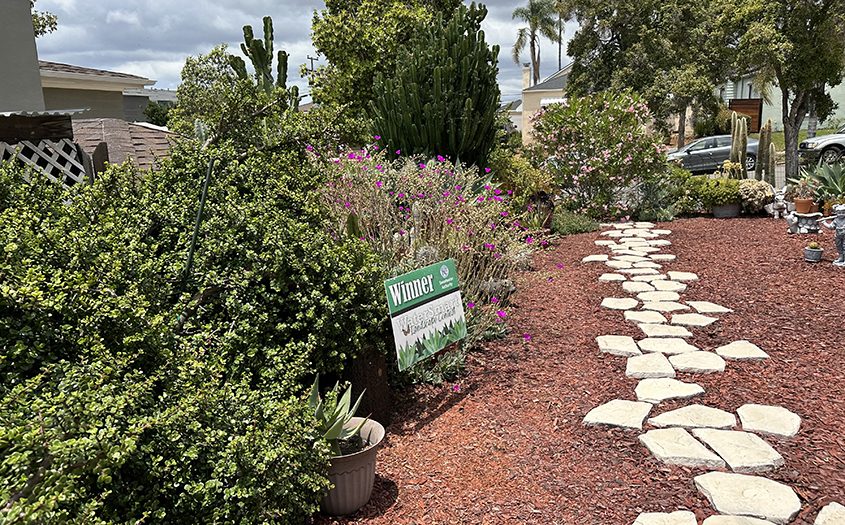
The space is now full of low-water use plants, steppingstones, and decorative planters. Photo: Sweetwater Authority
The transformed landscape includes flowering plants and shrubs like Sedum, Oleander, and Aeonium. The yard also features a variety of cacti and succulents, including Elephant Bush, Ghost Euphorbia, Jade, Cholla Cactus, and more.
Impressive water-saving results
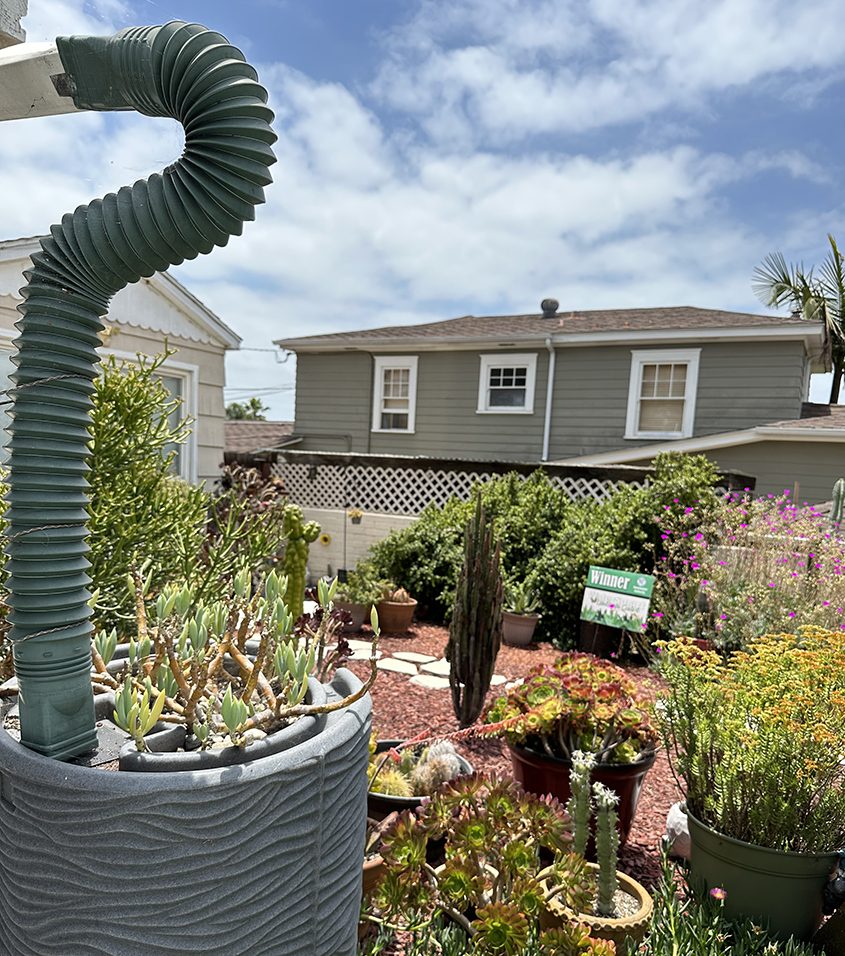
A rain barrel is part of the newly redesigned landscape. Photo: Sweetwater Authority
Schultz now waters her yard only once a month when needed. A passionate gardener, she prefers to water each plant by hand, using water collected from her rain barrel.
By switching from turf to water-wise plants, Schultz saves an estimated 12,000 gallons of water each year.
“Ms. Schultz’s landscape transformation clearly demonstrates that investing in a water-wise landscape can add beauty to your home while providing big savings on your water bill,” said Board Chair Hector Martinez. “The Authority is here to provide rebates, resources, and support to any customer interested in investing in a low water-use landscape.”

Catalina Schultz now waters her yard only once a month when needed. Photo: Sweetwater Authority
The annual WaterSmart Landscape Contest is an opportunity for Authority customers to showcase their best, water-wise landscapes. All customers who have transformed their yards to be more water efficient are encouraged to enter the contest for the chance to win a $250 gift certificate.
(Editor’s note: The Sweetwater Authority is one of the San Diego County Water Authority’s 24 member agencies that deliver water across the San Diego County region.)


